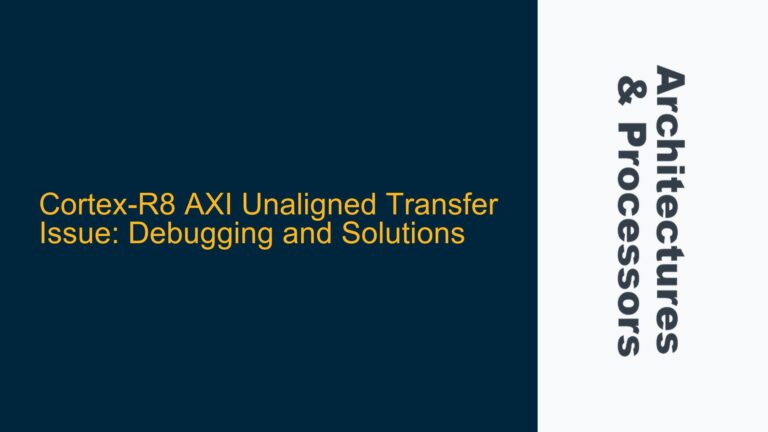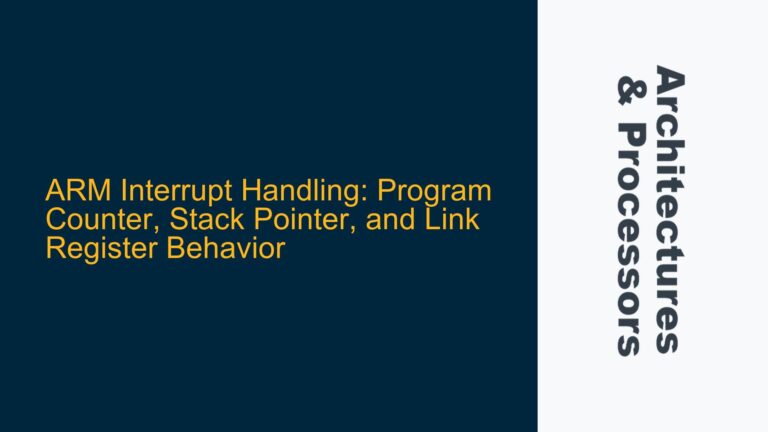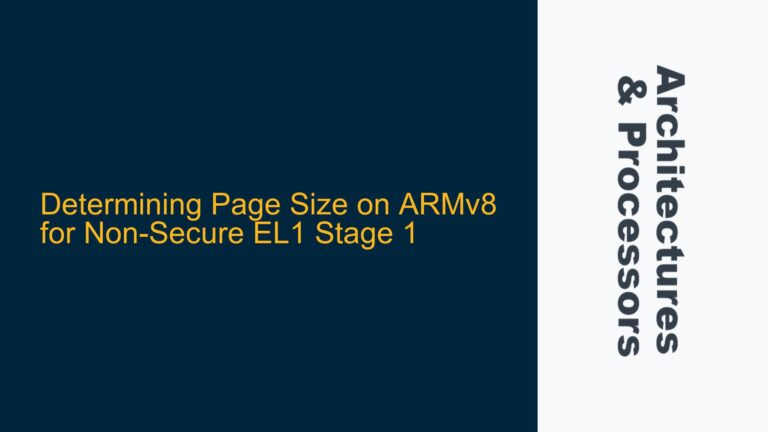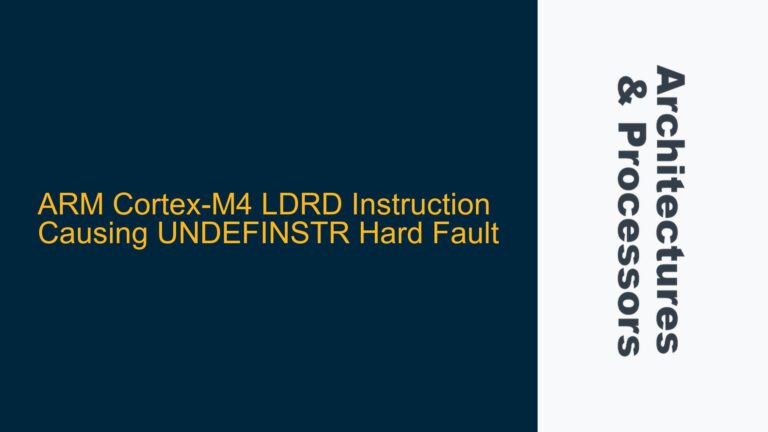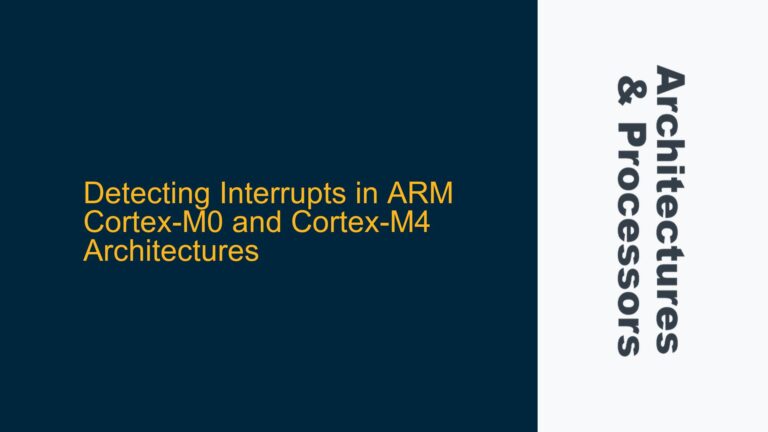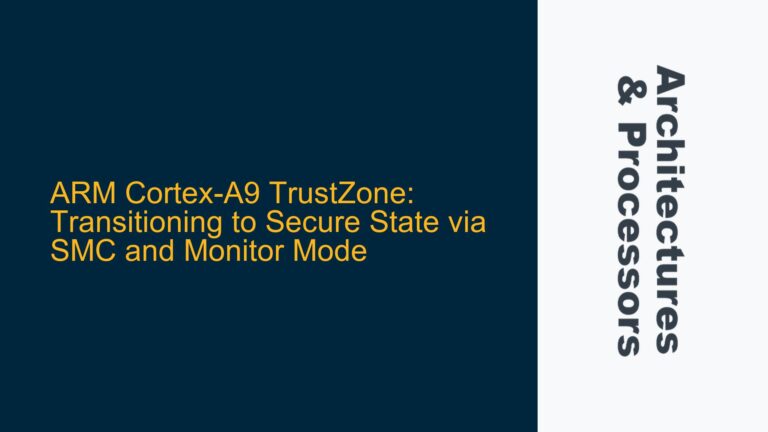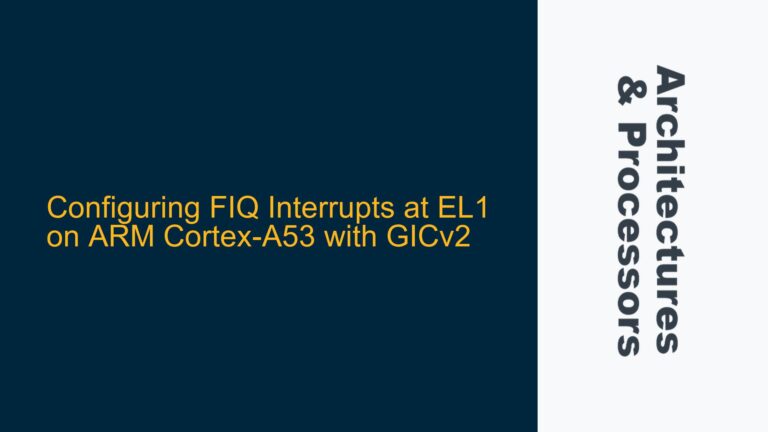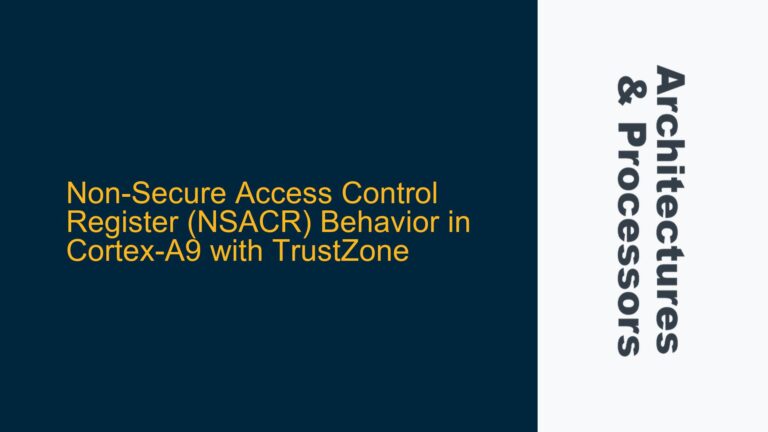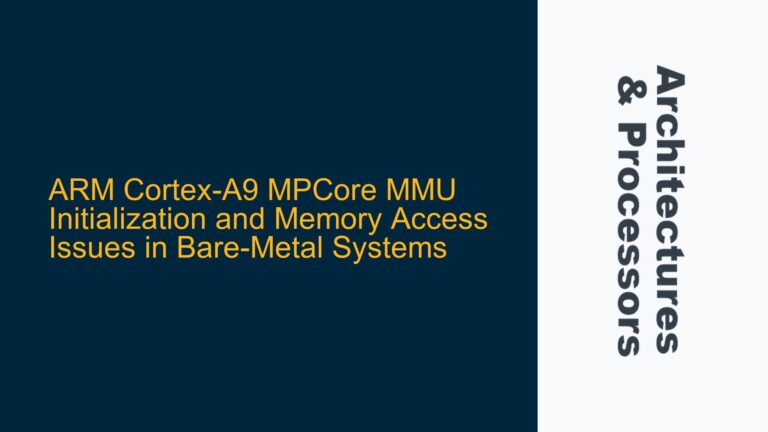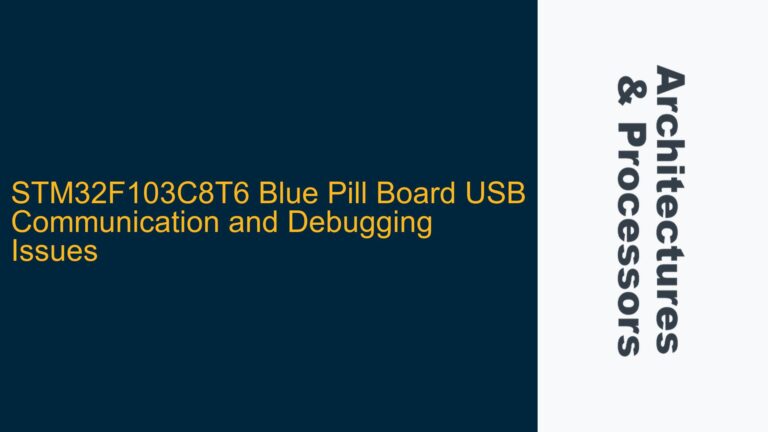Cortex-R8 AXI Unaligned Transfer Issue: Debugging and Solutions
Cortex-R8 AXI Unaligned Memory Access Behavior The Cortex-R8 processor, like many ARM cores, has specific requirements and behaviors when it comes to handling unaligned memory accesses. An unaligned memory access occurs when a data transfer operation targets an address that is not a multiple of the data size being accessed. For example, attempting to write…
